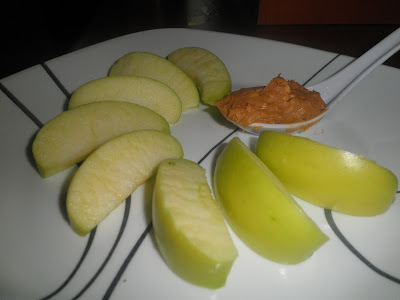For
years I avoided attempting certain staples for the simple reason that I was
convinced I would mess them up. Meringue intimidated me, the thought of poaching
an egg gave me shivers and I swore off caramel after a burnt and sticky mishap I
had with Paula Dean’s flan recipe (I don’t want to go there). But finally boredom and a dash of spontaneity enticed me to face my trepidation and tackle
two of my greatest culinary fears at once--and enter the finished products in a competition at the farmers market the next afternoon.
Admittedly
not the best idea, as I am a poor multi-tasker and get easily distracted. But I
was determined to crank out two award-winning pies that would shock and awe the
judges. I firmly believed the only way to do this was to master difficult techniques
that required practice, experience and numerous attempts. And I firmly believed
that I could do it in a day. I don’t know anything about meringue but I’ve
heard rumors that they disintegrate, weep and do all sorts of unbecoming things
when it’s humid outside. It just so happened that I chose to do this on one of
the most rainy and humid days of the summer. Excellent.
Sometimes
the best motivation is insanity. That and pressure. I had 2 hours to produce
two of the most iconic American treats: apple pie and lemon meringue.
It
turns out that meringue is really not that difficult to make. I know somebody
somewhere is going to disagree with that statement so I can’t (and won’t) claim
any sort of expertise on the topic. I’ve only made it once (well, twice now)
and I have never had lemon meringue pie before today so I’m not even sure if it
tasted normal but it tasted pretty darn good to me—sort of like an extra soft
marshmallow. I’m a fan.
Against
all odds, I ended up with a beautiful, glistening, white, pillowy, sweet,
mile-high (okay, you get the picture) meringue to top my tangy lemon curd,
which topped my slightly under-cooked pie crust. This was after screwing up the
order of ingredients and dropping not one but three egg shells in the bowl,
which I immediately chased and wasted precious time digging out of the slippery
whites. I hate egg shells.
The
caramel, which was initially destined to become part of a salted caramel apple
pie but turned out to miraculously switch destinies when I discovered how
delicious it was and how marvelously well it paired with apple slices at the
precise moment that my stomach was grumbling from hunger, was not the disaster I
pictured it would be. I was skeptical to say the least, especially when the
sugar-water-butter mixture did nothing but foam obnoxiously for ten minutes. I
stood there, uncomfortably glancing at the clock and back at the caramel and
back at the clock. I checked and re-checked the recipe, which, as usual, proved
no help in the lack-of-patience department. ‘This step may take a while’ was
all it said. Wow, thanks.
 As
promised, the caramel did eventually turn ‘the color of copper’, at which point
I added some cream and almost burnt myself numerous times as I whisked it to
death, terrified that it would seize up on me like so many caramels in my
unwritten nightmares. It didn’t. Instead, it turned into a velvety sauce that
tasted deeply of, well, caramel.
As
promised, the caramel did eventually turn ‘the color of copper’, at which point
I added some cream and almost burnt myself numerous times as I whisked it to
death, terrified that it would seize up on me like so many caramels in my
unwritten nightmares. It didn’t. Instead, it turned into a velvety sauce that
tasted deeply of, well, caramel.
Long
story short, I suffered from a severe case of fate or dumb luck or perhaps
both. Here are the finished products:
















